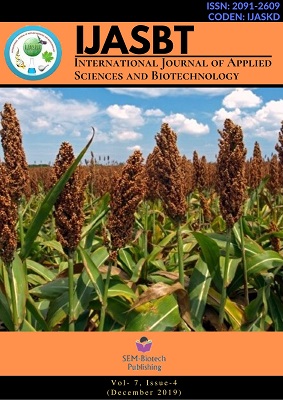Assessment of Home Garden: A Case of Purkot VDC, Tanahun District
DOI:
https://doi.org/10.3126/ijasbt.v7i4.26923Keywords:
Determinants, Food and nutrition, Home garden, IncomeAbstract
Growing different crop species in combination with mushroom, honey bee, livestock around homestead is an ancient practice of home gardening where marginal land, labour, limited capital with simple tools and technology are used. A survey was conducted in Purkot VDC of Tanahun district in April 2015 with the purpose of assessing the status and annual income of home garden. Data was collected through purposive method by using structured questionnaire at four wards of the VDC. The economic return was assessed through calculating the local retail value of the product without considering cost associated with it. The average annual income of home garden was NRs. 33528.65 from average 377.78 m2 (0.76 Ropani) home garden, derived from cultivation of vegetables, fruits, legumes, medicinal & aromatic plants and cereals. About 65 % household involved in multistoried gardening with the objective of home consumption (66.7 %). Home garden of study area was truly vegetable based (100 %). Income of home garden was determined by objectives of gardening, education level of respondents and type of species grown. The key problem of home garden was insufficient water (81.2 % of cases), incidence of disease insect/pest (66.7 % of cases), weather and climatic impact (56.2 %), animal trespass (41.7 %) and labour insufficiency in gardening (31.2 %).
Int. J. Appl. Sci. Biotechnol. Vol 7(4): 453-456




